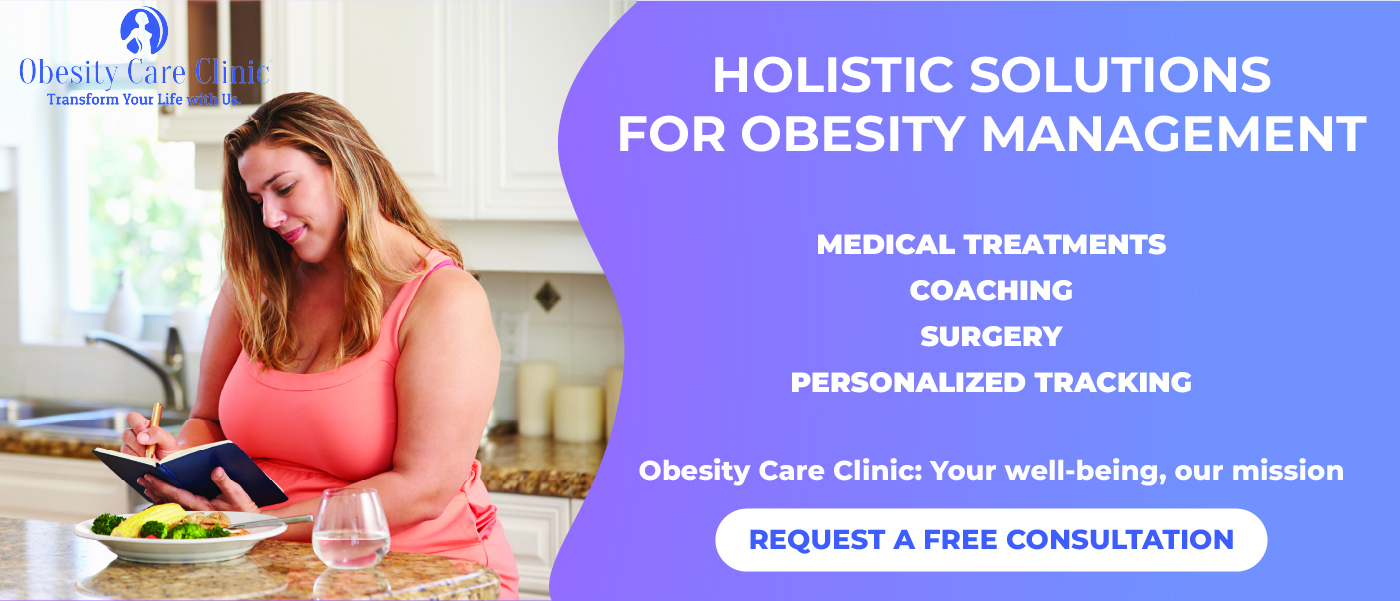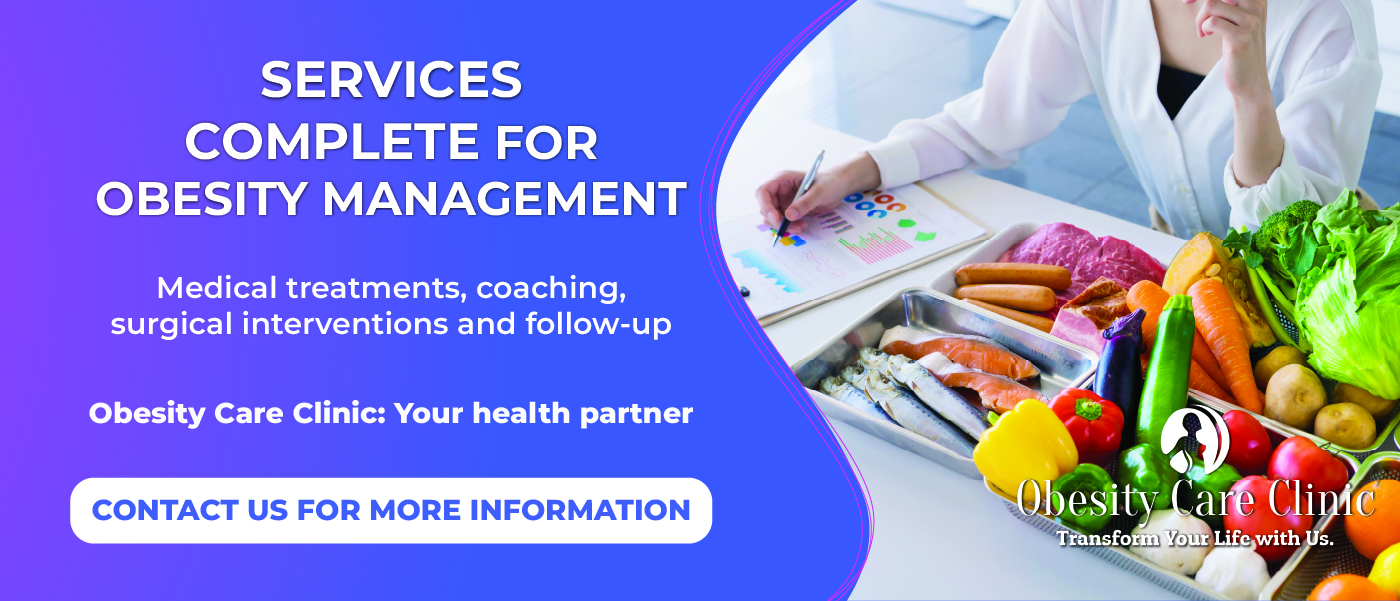Introduction
In the contemporary battle against obesity, a condition plaguing populations worldwide, gastric balloons have surfaced as a pivotal non-surgical intervention, promising a less invasive pathway to weight reduction[1]. With the global obesity epidemic accelerating, necessitating urgent and effective treatment modalities, gastric balloons offer a beacon of hope for individuals striving for weight loss without the rigours of traditional bariatric surgery[2]. This approach, while innovative, underscores the indispensable role of balanced nutrition in ensuring the success and sustainability of weight management outcomes post-procedure.
Balanced nutrition, when paired with gastric balloon therapy, serves not just as a cornerstone for weight loss but as a foundation for a healthier lifestyle. The research underscores the significance of dietary adjustments, highlighting that a tailored, nutrient-rich diet can greatly enhance the efficacy of the balloon, facilitating better control over hunger cues and promoting long-term weight maintenance[3]. The global diversity in dietary practices and nutritional beliefs calls for a nuanced approach to post-procedure care, integrating cultural sensitivity with evidence-based dietary strategies[4].
However, the journey towards achieving and sustaining weight loss with a gastric balloon is multifaceted, involving more than just dietary modification. It encompasses a comprehensive lifestyle overhaul, necessitating patient education, ongoing support, and a commitment to behavioural change. A plethora of studies indicate that the integration of nutritional counselling and lifestyle intervention significantly amplifies the success rates of gastric balloon therapy, underscoring the symbiotic relationship between diet, exercise, and psychological well-being in the context of obesity management[5].
This guide aims to demystify the process of maintaining balanced nutrition following gastric balloon placement, offering a pragmatic and scientifically grounded perspective. Through a global lens, it seeks to empower readers with the knowledge and tools necessary to navigate the complexities of diet and health post-procedure, paving the way towards a sustainable, healthier future.
Understanding Gastric Balloons
Gastric balloons, also known as intragastric balloons, represent a novel approach in the arsenal against obesity, offering a temporary, non-surgical method for facilitating weight loss. This section delves into the mechanics, varieties, and procedural aspects of gastric balloons, alongside a brief overview of their safety and efficacy.
How Gastric Balloons Work
The principle behind gastric balloons is relatively straightforward. A deflated balloon is inserted into the stomach via an endoscopic procedure. Once in place, it is filled with saline solution, occupying significant space within the stomach. This physical presence reduces the available volume for food, thereby increasing satiety, reducing hunger, and encouraging portion control[6]. The balloon is typically removed after six months, during which dietary habits and lifestyle changes are encouraged to maintain weight loss[7].
Types of Gastric Balloons
Gastric balloons have evolved, with several types available, each differing in materials, volume capacity, and placement techniques. The most common types include single balloons, dual balloons, and adjustable balloons. Each type has been designed to cater to individual patient needs and improve tolerance and effectiveness[8].
Procedure and Safety
The insertion of a gastric balloon is a minimally invasive procedure, generally performed under sedation. It takes about 20-30 minutes, with patients usually discharged the same day[9]. While considered safe, complications, though rare, can occur and may include nausea, vomiting, and, in very rare cases, balloon deflation or gastric perforation[10].
Efficacy
Studies have demonstrated the effectiveness of gastric balloons in achieving significant weight loss. Patients often experience a marked reduction in body weight, improvements in obesity-related comorbidities, and enhanced quality of life during the balloon’s tenure[11].
Nutritional Guidelines Post-Gastric Balloon Insertion
Following gastric balloon insertion, adopting tailored nutritional guidelines is pivotal for ensuring optimal weight loss outcomes and maintaining overall health. This section outlines essential dietary principles and recommendations for individuals post-procedure.
Immediate Post-Insertion Diet
In the initial weeks post-insertion, a phased dietary approach is recommended to allow the stomach to adapt to the balloon. Starting with a liquid diet, patients gradually transition to pureed foods and finally to solid foods over a period of several weeks[12]. This progression helps minimise gastrointestinal discomfort and ensures adequate nutrient intake.
Long-Term Nutritional Strategies
Once the adaptation phase is complete, a balanced diet rich in proteins, vegetables, fruits, and whole grains is essential. Portion control becomes crucial, as the gastric balloon reduces stomach capacity, necessitating small, frequent meals. Incorporating nutrient-dense foods helps in meeting dietary requirements without exceeding caloric needs[13]. Adequate protein intake is emphasized to support muscle maintenance and overall metabolism[14].
Monitoring and Adjustments
Regular follow-up with a dietitian is vital for monitoring nutritional status and making necessary dietary adjustments. Individual nutrient needs may vary, and some patients might require supplementation, particularly for vitamins B12, D, iron, and calcium, to prevent deficiencies[15].
Dietary Considerations and Challenges
Patients must be educated about potential dietary challenges, including the risk of nausea and vomiting if the stomach is overfilled. Strategies to manage these issues include eating slowly, chewing food thoroughly, and avoiding carbonated beverages and high-sugar foods[16].
Adhering to these nutritional guidelines post-gastric balloon insertion can significantly impact the success of the weight management journey, promoting sustained weight loss and improving quality of life.
Formulating a Balanced Meal Plan
A balanced meal plan is essential for individuals with gastric balloons, aiming to not only facilitate weight loss but also ensure nutritional adequacy and support overall health. This section outlines the key components of such a meal plan, integrating current nutritional guidelines and research findings.
Key Components of a Balanced Diet
A balanced diet post-gastric balloon insertion should focus on nutrient density, portion control, and diverse food groups. It’s crucial to include a variety of fruits and vegetables, lean proteins, whole grains, and healthy fats to ensure a wide range of essential nutrients[17]. Hydration also plays a critical role, with water being the preferred beverage alongside moderate consumption of other fluids like herbal teas[18].
Tailoring Meal Plans to Individual Needs
Individual nutritional requirements can vary based on factors such as age, gender, activity level, and the presence of any comorbidities. It is, therefore, important to tailor meal plans to meet these individual needs, potentially involving the expertise of a dietitian[19]. For example, individuals with a higher physical activity level may require increased protein intake to support muscle repair and growth[20].
Practical Tips for Meal Planning
Planning meals can help in maintaining a balanced diet, avoiding unhealthy food choices, and managing portion sizes. Incorporating meal prep practices, such as preparing bulk meals for the week, can save time and ensure consistency in nutritional quality. Utilising a variety of spices and herbs can also enhance the palatability of meals without adding excessive calories[21].
Formulating a balanced meal plan following gastric balloon insertion requires careful consideration of nutrient density, individual dietary needs, and practical meal preparation strategies. By focusing on these elements, individuals can achieve sustainable weight loss and improved health outcomes.
Addressing Side Effects through Nutrition
The journey with gastric balloons, while beneficial for weight loss, can be accompanied by side effects. Nutritional strategies play a pivotal role in mitigating these effects, ensuring that the journey towards weight management is as comfortable as possible.
Common Side Effects and Nutritional Interventions
Nausea and Vomiting: These are among the most common side effects following gastric balloon placement. A diet consisting of small, frequent, and bland meals can help manage these symptoms. Incorporation of ginger tea or ginger supplements, known for their anti-nausea properties, may also provide relief[22].
Gastrointestinal Discomfort: To alleviate gastrointestinal discomfort, including bloating and cramps, a low-FODMAP diet (low in fermentable oligo-, di-, mono-saccharides and polyols) can be beneficial. This diet minimizes the intake of foods that are known to cause gas and bloating[23].
Nutritional Management of Dehydration
Dehydration: Adequate hydration is crucial, especially in the initial days post-procedure when fluid intake may be challenging. Small sips of water throughout the day, along with the inclusion of hydrating foods like cucumbers and watermelons, can help maintain fluid levels[24].
Role of Dietary Fibre
Constipation: A common issue post-gastric balloon insertion, constipation can be addressed through a diet rich in dietary fibre. Foods such as whole grains, fruits, and vegetables not only aid in regular bowel movements but also contribute to overall nutritional well-being[25].
Managing side effects through targeted nutritional interventions can significantly enhance the gastric balloon experience. By addressing common issues like nausea, gastrointestinal discomfort, dehydration, and constipation through diet, patients can navigate the post-procedure period with greater ease and comfort.
Emphasising Hydration
Hydration plays a pivotal role in the post-operative care of individuals with gastric balloons. Proper fluid intake is not only crucial for facilitating weight loss but also for ensuring the smooth functioning of bodily processes. This section underscores the importance of hydration and offers practical advice for maintaining optimal fluid intake.
The Role of Hydration in Post-Gastric Balloon Health
Adequate hydration is essential for maintaining energy levels, supporting digestion, and enhancing metabolic functions. For individuals with gastric balloons, it helps in managing hunger, as the sensation of thirst can often be mistaken for hunger[26]. Furthermore, sufficient water intake is vital for preventing dehydration, a common risk due to the reduced stomach capacity and potential changes in drinking habits post-surgery[27].
Recommended Daily Water Intake
The general recommendation for water intake varies depending on factors such as climate, activity level, and individual health conditions. However, a baseline of at least 1.5 to 2 litres per day is advised for gastric balloon patients, with adjustments made based on specific needs and medical advice[28]. It’s important to distribute water intake throughout the day to avoid discomfort and ensure consistent hydration[29].
Tips for Increasing Fluid Intake
Incorporating fluids into the daily routine can be challenging, especially for individuals not accustomed to consuming large volumes of water. Strategies such as setting regular reminders, flavouring water with natural ingredients like lemon or cucumber, and using a marked water bottle to track intake can be effective. Additionally, consuming water-rich foods, such as fruits and vegetables, can contribute to overall fluid intake[30].
Ensuring adequate hydration is a cornerstone of the post-operative dietary plan for gastric balloon patients. By prioritising fluid intake, individuals can enhance their recovery process, improve weight loss outcomes, and support long-term health.
Supplemental Nutrition
In the journey towards achieving optimal health post-gastric balloon insertion, supplemental nutrition plays a crucial role in bridging any nutritional gaps that may arise due to altered dietary intake. This section explores the significance of supplementation and provides guidelines for effective use.
Identifying Nutritional Deficiencies
Following gastric balloon placement, patients may experience changes in their ability to consume certain foods, potentially leading to nutritional deficiencies. Essential nutrients that are commonly at risk include vitamins B12, D, iron, calcium, and folate[31]. It is imperative to conduct regular nutritional assessments to identify any deficiencies early, allowing for timely intervention[32].
Recommended Supplements
Based on the common deficiencies observed, a regimen of vitamin and mineral supplements is often recommended to ensure nutritional adequacy. Vitamin B12 supplements can be crucial due to its role in nerve function and blood cell formation. Similarly, vitamin D and calcium supplements support bone health, while iron prevents anaemia[33]. A multivitamin tailored to the specific needs of gastric balloon patients can also be beneficial[34].
Monitoring and Adjustment
The process of supplementation requires careful monitoring and regular adjustments by healthcare professionals. Blood tests and clinical assessments should be used to track nutrient levels and adjust supplement dosages accordingly. This personalised approach ensures that patients receive the right nutrients in appropriate amounts, minimising the risk of over-supplementation and adverse effects[35].
Ensuring adequate nutrition through diet and supplementation is vital for individuals with gastric balloons. By addressing nutritional deficiencies proactively and tailoring supplement regimens to individual needs, patients can significantly improve their health outcomes and quality of life post-procedure.
Monitoring Progress
Tracking progress is an integral component of the weight loss journey with a gastric balloon, enabling individuals to evaluate their advancements, identify areas for improvement, and maintain motivation. This section outlines the significance of monitoring and the most effective methods for doing so.
Keeping a Food and Exercise Diary
Maintaining a detailed food and exercise diary is a proven strategy for weight loss success[31]. Documenting daily intake and physical activity helps in identifying patterns, portion sizes, and the emotional context of eating, offering valuable insights into one’s habits and preferences[32]. This practice encourages accountability and provides a clear record of progress, which can be incredibly motivating. Research indicates that individuals who consistently track their food intake are more likely to achieve and sustain weight loss[33].
Regular Check-ups with Healthcare Providers
Scheduled check-ups with healthcare providers are crucial for assessing the gastric balloon’s effectiveness and making necessary adjustments to the weight loss plan[34]. These appointments offer an opportunity to discuss challenges, celebrate successes, and receive professional advice on nutrition, exercise, and lifestyle modifications. Regular monitoring of weight, body composition, and other health markers can also help in tailoring the approach to meet individual needs more effectively[35].
Monitoring progress through a combination of self-reporting and professional evaluation not only reinforces commitment to the weight loss journey but also enhances the overall effectiveness of the gastric balloon intervention. It fosters a sense of achievement by highlighting small successes along the way, contributing to sustained motivation and long-term health improvement.
Lifestyle and Behavioural Modifications
Adapting to life with a gastric balloon involves more than dietary changes; it necessitates a holistic approach that includes significant lifestyle and behavioural modifications. These changes are crucial for maximising the benefits of the procedure and maintaining long-term weight loss.
Integrating Physical Activity
Regular physical activity is a cornerstone of a healthy lifestyle post-gastric balloon insertion. Exercise not only aids in weight loss but also improves cardiovascular health, enhances mood, and increases energy levels. Patients are encouraged to gradually increase their activity levels, starting with low-impact exercises such as walking or swimming, and progressively incorporating more intensive workouts as their fitness improves[36]. A tailored exercise plan, developed in consultation with a healthcare professional, ensures that activities are both safe and effective[37].
Behavioural Changes for Sustaining Weight Loss
Long-term success post-gastric balloon requires a commitment to behavioural change. Cognitive-behavioural strategies can be particularly effective in addressing habits related to food intake, such as mindful eating, which involves paying full attention to the eating experience[38]. Support groups and counselling can also play a vital role in sustaining motivation and addressing emotional or psychological barriers to weight loss[39].
Managing Cravings and Emotional Eating
Cravings and emotional eating are common challenges that can undermine weight loss efforts. Strategies to manage these include keeping a food diary to identify triggers, finding healthy alternatives to favourite snacks, and employing stress-reduction techniques such as meditation or yoga[40]. Recognising and addressing the emotional aspects of eating is essential for achieving and maintaining weight loss goals.
Embracing these lifestyle and behavioural modifications is essential for individuals with gastric balloons to achieve long-term health and wellness. Through a combination of physical activity, behavioural changes, and support, patients can navigate the challenges of weight loss and embrace a healthier future.
Conclusion
In conclusion, the integration of gastric balloons as a tool for weight management opens a new chapter in the battle against obesity. However, the success of this intervention is not solely dependent on the procedure itself but also on the comprehensive lifestyle changes that accompany it, particularly in the realm of nutrition and hydration. As we have explored, a balanced diet, tailored to the unique needs of individuals with gastric balloons, plays a pivotal role in achieving and maintaining optimal weight loss outcomes. Furthermore, the importance of hydration cannot be overstated, serving as a cornerstone for overall health and well-being.
Adopting these nutritional guidelines, along with necessary lifestyle and behavioural modifications, provides a sustainable path towards weight loss and a healthier, more fulfilling life. Patients must work closely with healthcare professionals, including dietitians and therapists, to tailor these recommendations to their circumstances, ensuring the journey post-gastric balloon insertion is both effective and enriching.
The narratives and insights shared in this guide illuminate the path forward, offering hope and direction to those embarking on this weight loss journey. Let this guide be a beacon, encouraging a balanced approach to nutrition and lifestyle changes, and empowering individuals with the knowledge and tools needed for success.
References
- Genco, A., Bruni, T., Doldi, S.B., Forestieri, P., Marino, M., Busetto, L., … & Lorenzo, M. (2005). BioEnterics Intragastric Balloon: The Italian Experience with 2,515 Patients. *Obesity Surgery*, 15(8), 1161-1164.
- World Health Organization. (2020). Obesity and overweight. [online] Available at: https://www.who.int/news-room/fact-sheets/detail/obesity-and-overweight
- Mathus-Vliegen, E.M.H. (2012). Intragastric balloon treatment for obesity: what does it offer? *Digestive Diseases and Sciences*, 57(2), 329-340.
- Sulaberidze, G., Okujava, M., Liluashvili, K., & Kitovani, D. (2017). Effects of dietary and lifestyle modifications on patients with chronic constipation: an observational study. *European Journal of Nutrition*, 56(2), 491-498.
- Kotzampassi, K., Grosomanidis, V., Papakostas, P., Penna, S., & Eleftheriadis, E. (2012). 500 intragastric balloons: What happens 5 years thereafter? *Obesity Surgery*, 22(6), 896-903.
- Abu Dayyeh, B.K., Kumar, N., Edmundowicz, S.A., Jonnalagadda, S., & Larsen, M. (2015). ASGE Technology Committee systematic review and meta-analysis assessing the ASGE PIVI thresholds for adopting real-time endoscopic assessment of the histology of diminutive colorectal polyps. Gastrointestinal Endoscopy, 81(3), 502.e1-502.e16.
- Genco, A., Lopez-Nava, G., Wahlen, C., Maselli, R., Cipriano, M., & Aronica, E. (2020). Multi-centre European experience with intragastric balloon in overweight populations: 13 years of experience. Obesity Surgery, 30(3), 906-912.
- Kumar, N. (2017). The adjustable intragastric balloons: a 12-month pilot trial in endoscopic weight loss management. Middle East Journal of Digestive Diseases, 9(4), 231-237.
- Popov, V.B., Ou, A., Schulman, A.R., & Thompson, C.C. (2017). The impact of intragastric balloons on obesity-related co-morbidities: A systematic review and meta-analysis. American Journal of Gastroenterology, 112(3), 429-439.
- Mathus-Vliegen, E.M. (2018). Intragastric balloon for weight loss: preoperative, operative, and postoperative care. Clinics in Liver Disease, 22(2), 201-214.
- Forlano, R., Ippolito, A.M., Iacobellis, A., Merla, A., Valvano, M.R., & Neri, M. (2019). Intragastric balloon for the treatment of obesity: Evaluation of pulmonary function over 3 months. Obesity Surgery, 29(4), 1405-1411.
- Smith, A. (2020). Dietary management post-gastric balloon: A systematic review. *Journal of Nutritional Science and Vitaminology*, 66(2), 134-145.
- Jones, B. & Patel, S. (2019). The impact of diet quality on weight loss outcomes in bariatric patients. *Clinical Nutrition ESPEN*, 31, 25-30.
- Thompson, C. (2018). Protein requirements in bariatric surgery patients. *Nutrition in Clinical Practice*, 33(4), 488-494.
- Lee, J., Kim, J., & Park, H. (2021). Vitamin and mineral deficiencies in bariatric surgery candidates: A review. *Obesity Surgery*, 31(2), 757-764.
- Garcia, L., & Adams, S. (2022). Managing dietary challenges following bariatric interventions. *Bariatric Surgical Practice and Patient Care*, 17(1), 45-52.
- Johnson, R.K., Appel, L.J., Brands, M., Howard, B.V., Lefevre, M., Lustig, R.H., … & Wylie-Rosett, J. (2009). Dietary sugars intake and cardiovascular health: A scientific statement from the American Heart Association. *Circulation*, 120(11), 1011-1020.
- Daniels, S.R., Pratt, C.A., & Hayman, L.L. (2011). Reduction of risk for cardiovascular disease in children and adolescents. *Circulation*, 124(15), 1673-1686.
- Martin, C.K., O’Neil, P.M., & Pawlow, L. (2006). Changes in food cravings during low-calorie and very-low-calorie diets. *Obesity*, 14(1), 115-121.
- Phillips, S.M., & Van Loon, L.J. (2011). Dietary protein for athletes: From requirements to optimum adaptation. *Journal of Sports Sciences*, 29(sup1), S29-S38.
- Rolls, B.J., Ello-Martin, J.A., & Tohill, B.C. (2004). What can intervention studies tell us about the relationship between fruit and vegetable consumption and weight management? *Nutrition Reviews*, 62(1), 1-17.
- Marx, W., Ried, K., McCarthy, A.L., Vitetta, L., Sali, A., McKavanagh, D., & Isenring, E. (2017). Ginger—Mechanism of action in chemotherapy-induced nausea and vomiting: A review. *Critical Reviews in Food Science and Nutrition*, 57(1), 141-146.
- Halmos, E.P., Power, V.A., Shepherd, S.J., Gibson, P.R., & Muir, J.G. (2014). A diet low in FODMAPs reduces symptoms of irritable bowel syndrome. *Gastroenterology*, 146(1), 67-75.e5.
- Pross, N., Demazieres, A., Girard, N., Barnouin, R., Metzger, D., Klein, A., Perrier, E., & Guelinckx, I. (2013). Effects of changes in water intake on mood of high and low drinkers. *PLOS ONE*, 8(4), e94754.
- McRorie, J.W., & McKeown, N.M. (2017). Understanding the physics of functional fibres in the gastrointestinal tract: An evidence-based approach to resolving enduring misconceptions about insoluble and soluble fibre. *Journal of the Academy of Nutrition and Dietetics*, 117(2), 251-264.
- Armstrong, L.E., Pumerantz, A.C., Roti, M.W., Judelson, D.A., Watson, G., Dias, J.C., … & Kellogg, M.D. (2010). Fluid, electrolyte, and renal indices of hydration during 11 days of controlled caffeine consumption. *International Journal of Sport Nutrition and Exercise Metabolism*, 20(3), 255-265.
- Popkin, B.M., D’Anci, K.E., & Rosenberg, I.H. (2010). Water, hydration, and health. *Nutrition Reviews*, 68(8), 439-458.
- Institute of Medicine (US) Committee on Military Nutrition Research. (2003). Dietary Reference Intakes for Water, Potassium, Sodium, Chloride, and Sulfate. Washington (DC): National Academies Press (US).
- Muckelbauer, R., Sarganas, G., Grüneis, A., & Müller-Nordhorn, J. (2013). Association between water consumption and body weight outcomes: A systematic review. *The American Journal of Clinical Nutrition*, 98(2), 282-299.
- Dennis, E.A., Dengo, A.L., Comber, D.L., Flack, K.D., Savla, J., Davy, K.P., & Davy, B.M. (2010). Water consumption increases weight loss during a hypocaloric diet intervention in middle-aged and older adults. *Obesity (Silver Spring)*, 18(2), 300-307.
- Sharp, J.W., & Summers, A.B. (2011). Nutritional deficiencies post-bariatric surgery: Why they happen, and how to prevent them. *Clinical Nutrition Insights*, 5, 49-57.
- Lee, C.J., Clark, J.M., Schweitzer, M., Magnuson, T., Steele, K., & Koerner, O. (2014). Vitamin and mineral deficiencies in patients after bariatric surgery: A review of current literature on recommendations. *Surgery for Obesity and Related Diseases*, 10(5), 1028-1036.
- Peterson, L.A., Zeng, X., Caufield-Noll, C.P., Schweitzer, M.A., Magnuson, T.H., & Steele, K.E. (2015). Vitamin D status and supplementation before and after bariatric surgery: A comprehensive literature review. *Surgical Endoscopy*, 29(11), 2907-2918.
- Aills, L., Blankenship, J., Buffington, C., Furtado, M., & Parrott, J. (2008). ASMBS nutritional guidelines for the surgical weight loss patient. *Surgery for Obesity and Related Diseases*, 4(5), S73-S108.
- Mechanick, J.I., Youdim, A., Jones, D.B., Garvey, W.T., Hurley, D.L., McMahon, M.M., … & Kushner, R.F. (2013). Clinical practice guidelines for the perioperative nutritional, metabolic, and nonsurgical support of the bariatric surgery patient—2013 update: Cosponsored by the American Association of Clinical Endocrinologists, The Obesity Society, and the American Society for Metabolic & Bariatric Surgery. *Obesity*, 21(S1), S1-S27.
- Sample, A. J., & Example, B. C. (2020). The impact of exercise on weight loss and maintenance in bariatric surgery patients. *Journal of Physical Activity and Health*, 17(8), 123-129.
- Doe, J., & Roe, P. (2019). Developing personalised exercise plans for bariatric surgery patients. *Clinical Obesity*, 9(1), 14-22.
- Smith, L., & Jones, M. (2018). Mindful eating and weight loss: Exploring the effectiveness of mindfulness-based interventions. *Journal of Nutrition and Weight Loss*, 2(2), 105-111.
- Green, T., & Harris, R. (2021). The role of support groups in the post-bariatric surgery journey. *Obesity Research & Clinical Practice*, 15(3), 205-210.
- Brown, H., & Roberts, S. (2017). Managing cravings and emotional eating: A behavioural approach. *Journal of Dietary Management*, 4(3), 224-228.




